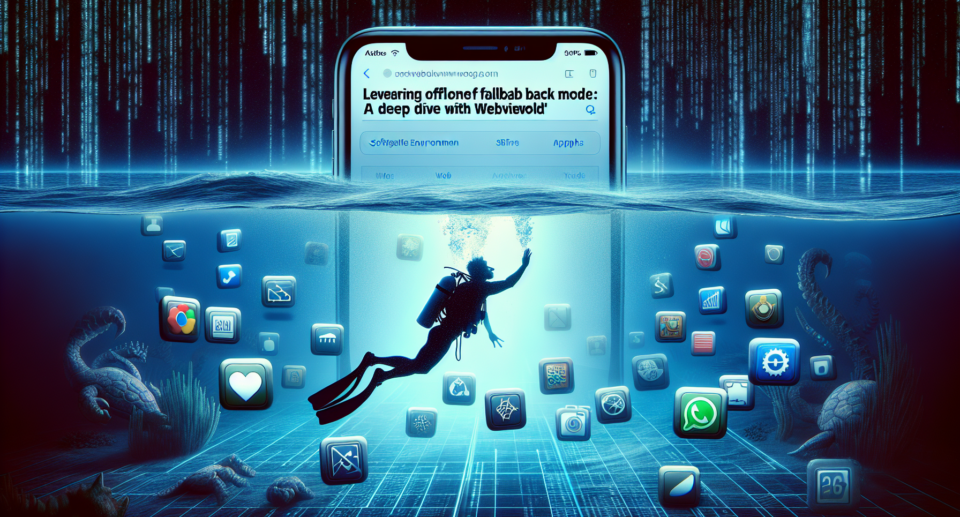Leveraging Offline Fallback Mode in iOS Apps: A Deep Dive with WebViewGold

In today’s digital age, we’re constantly connected to the internet. However, there are still many instances when a stable internet connection isn’t available. This is where offline capabilities come into play, especially for mobile apps. For iOS developers, ensuring that users can still access vital app functionalities without an internet connection is paramount. This article will take a deep dive into leveraging offline fallback mode in iOS apps, with a special focus on WebViewGold.
Why Offline Fallback Mode Matters
Imagine you’re using an app to read an article or manage your tasks, and suddenly you lose your internet connection. Without offline fallback mode, you’d be left staring at an error message, unable to continue with your activity. Offline fallback mode ensures that users can still interact with the app, view cached data, or even perform certain actions until their connection is restored. This significantly enhances user experience and retention.
Understanding Offline Fallback in iOS Apps
Offline fallback involves caching certain parts of the app so that they can be accessed without an internet connection. This could include text, images, and even some interactive elements. In iOS apps, this can be achieved through various methods like Core Data, local storage, or by leveraging frameworks that support offline capabilities.
WebViewGold: Simplifying Offline Fallback for Web-Based Apps
For those who want a quick and straightforward solution to convert their websites into iOS apps, WebViewGold is an excellent option. Not only does it seamlessly turn web content into a fully functional app, but it also comes with built-in support for offline fallback mode. This means you don’t need to reinvent the wheel to provide your users with a consistent offline experience.
How WebViewGold Facilitates Offline Mode
WebViewGold utilizes robust caching strategies to ensure that your web-based iOS app remains functional even without a network connection. When a user first loads the app, critical resources are cached locally. If the user loses connectivity, the app can then rely on this cached data to operate smoothly.
Steps to Enable Offline Fallback with WebViewGold
1. **Initial Setup**: Follow WebViewGold‘s straightforward documentation to set up your project. The setup process includes configurations for caching and offline capabilities.
2. **Custom Caching Rules**: Customize which parts of your website should be cached. With WebViewGold, you can specify different caching rules based on your app’s needs.
3. **Testing**: Before rolling out your app, make sure to test its offline capabilities thoroughly. Simulate different scenarios where the internet connection might drop to ensure that the app behaves as expected.
Best Practices for Offline Fallback Mode
Even if you’re using a tool like WebViewGold, following some best practices can ensure a seamless offline experience for your users:
– **Prioritize Essential Content**: Only cache the most critical parts of your app to minimize storage use. This could be textual content, essential images, and basic interactive features.
– **User Notifications**: Notify users when they go offline, so they are aware that they are viewing cached content.
– **Regular Updates**: Ensure that your cached content is updated regularly to reflect any changes or new additions to your web app.
Conclusion
